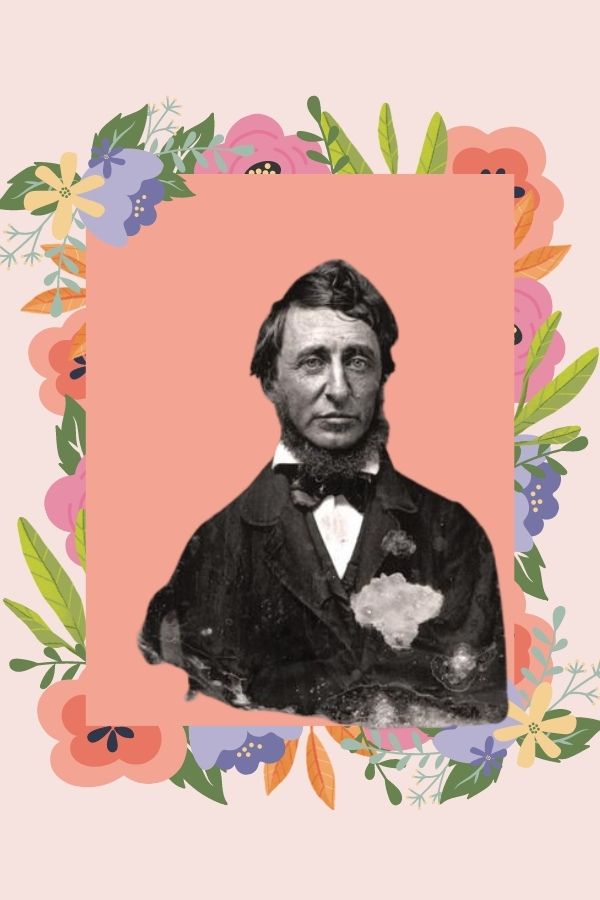- Home
-
Shop All
- Bible Verse & Christian
- Black & White Art Prints
- Book Lover Quotes
- Feminist Quotes
- Book Quote Mugs
- Fine Art Quote Prints
- Inspirational Wall Art
- Jane Austen Quotes Prints
- Jane Eyre & Bronte Art
- Love Poems & Quotes
- Minimalist Art Prints
- Nursery Decor Prints
- Other Options & Custom
- Poetry Quote Art
- Shakespeare Quotes Prints
- Travel Quote Art
- About
- Blog
- Track Order
- Contact Us

I Went Into the Woods: A Henry David Thoreau Primer

Thoreau is one of a number of authors who are widely known but have been reduced to a handful of pithy quotes. But who really was Thoreau? What was his background? Despite living nearly two hundreds years ago, Thoreau wrote on a wealth topics that are more relevant than ever, such as our relationship to the natural world as well as well as the need to stand up for injustice. Here is a brief primer on Thoreau.
He was an abolitionist. Thoreau delivered lectures that attacked the Fugitive Slave Law and supported other prominent abolitionists of his time. He was a conductor in the Underground Railroad. His most famous essay, “Civil Disobedience” on the need resist an unjust state, was heavily influential and it still considered a seminal text.
Ralph Waldo Emerson was his mentor, employer and life-long friend. After Thoreau left school, he met Emerson who then introduced him to a circle of writer and scholar friends, which included Margaret Fuller and Nathaniel Hawthorne. He encouraged his early writing and assisted him in publishing them. Emerson also introduced him to the concept of Transcendentalism, a loose philosophy that stressed the importance of nature and transcending the physical realm to reach a perfect spiritual state.
He worked in his family’s pencil factory in Concord, Massachusetts for most of his adult life. He continued to work there while he wrote and undertook other work. His parents also ran a boarding house, where he lived and did handy-man work.
Thoreau did go into the woods to be in nature and concentrate on his writings - but he was only about 1 1/2 miles from the family home. He built a small cabin on the edge of Walden Pond, where he lived for about two years. Famously, his mother would bring him food and do his laundry. He published Walden, or a life in the woods in 1854.
He kept a journal for twenty-four years. It totals nearly two million words. In his later years, he kept detailed observations of the natural history of Concord and in-depth account of the ecological world around him. He developed his own experiments and methods in an early form of Ecology. Some of his most famous essays on his findings include: “"Autumnal Tints","The Succession of Trees", and "Wild Apples”.

The site of his cabin at Walden Pond
He has been painted as misanthropic and anti-social caricature. Some accounts and modern critics say he was a narcissist — that he rejected human society in favour of the natural world, preferring the solitude of his own company in the woods. Some of his views can sound priggish and puritanical, dismissing the trappings of a normal life as getting in the way of “real living”. However, it has also been recorded that he cared very much about social issues, such as the abolitionist movement, and the goings-on in his local community. He was also very close to his brothers and sisters and wrote about them with affection. He threw parties for his neighbours and friends and they would visit him in his cabin. His writings also show a lively and irreverent sense of humour.
In some ways Thoreau might seem out-of-touch with the modern world. But his words have endured because he was, above all, a fine writer and keen documenter of his surroundings. He can still teach us much about how to exist more in step with nature and live a free and fulfilling life.
“Simplify your life. Don't waste the years struggling for things that are unimportant. Don't burden yourself with possessions. Keep your needs and wants simple and enjoy what you have. Don't destroy your peace of mind by looking back, worrying about the past. Live in the present. Simplify!”
It's the beauty within us that makes it possible for us to recognize the beauty around us. The question is not what you look at but what you see.
Quick links
Search
FAQ
Privacy policy
Shipping Policies
Terms of service
OUR MISSION
At BookQuoteDecor.com, we’re passionate about transforming spaces with the magic of words. We create premium, literature-inspired decorations that not only beautify your home but also celebrate the timeless elegance of written language. Our mission is to bring the wonder of books into your daily life with every carefully selected quote.


Leave a comment: